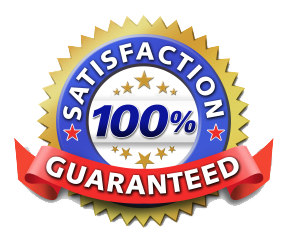Water damage can strike unexpectedly, leaving homeowners feeling overwhelmed and unsure where to begin. Communication is crucial during the recovery process when facing a water damage situation. Having a solid grasp of relevant terminology and key concepts can alleviate stress and help you make informed decisions as you work with professionals to restore your home.
In this article, we present a comprehensive glossary of water damage restoration terms, from A to Z, that will guide you through the recovery and restoration process. These terms encompass various aspects of the process, such as types of water damage, equipment, and restoration services. By familiarizing yourself with this essential jargon, you can effectively navigate the restoration process, ensuring your home’s smooth and stress-free recovery. Dive into our water damage restoration glossary and take the first step toward a successful restoration journey.
1. Antimicrobial Treatment
Antimicrobial treatment refers to applying chemical agents to prevent the growth of microorganisms, such as mold or bacteria, on affected surfaces. This treatment is essential to the water damage restoration process, as it inhibits the spread of harmful contaminants and prevents secondary damage.
2. Baseboards
Baseboards are the decorative molding pieces installed around the perimeter of a room, where the wall meets the floor. During water damage restoration, baseboards may need to be removed to assess the extent of damage and facilitate proper drying of the affected area.
3. Category and Class of Water Damage
There are three categories of water damage based on the level of contamination:
- Category 1 (Clean Water): Originates from a sanitary water source, such as a broken water supply line or faucet.
- Category 2 (Gray Water): Contains a significant level of contamination, such as discharge from washing machines, bathtubs, or dishwashers.
- Category 3 (Black Water): Highly contaminated and can cause health risks, as it contains pathogens, toxins, or sewage.
The classes of water damage refer to the level of water absorption and evaporation in a structure:
- Class 1: Least amount of water, absorption, and evaporation
- Class 2: Significant amount of water, affecting carpets and cushions, with damage to walls and structure
- Class 3: Greatest amount of water, with the saturation of walls, ceilings, and insulation
- Class 4: Specialty drying situations requiring advanced techniques and equipment
4. Dehumidification
Dehumidification is a key step in the water damage restoration process. Technicians use commercial-grade dehumidifiers to remove excess moisture from the air, reducing humidity levels and promoting effective drying of the affected structure and materials. This process prevents the growth of mold and mildew, as well as secondary damage due to moisture.
5. Drying
Drying is the process of extracting excess moisture from affected surfaces, such as walls, flooring, and furniture, using specialized equipment such as air movers and dehumidifiers. Proper drying prevents further damage, mold growth, and structural integrity issues.
6. Extraction
Extraction is the process of removing standing water from a property using specialized equipment such as pumps or water extractors. The extraction process is crucial for mitigating water damage and reducing drying time.
7. Flood Cuts
Flood cuts are a technique water damage restoration professionals use to remove damaged drywall or other structural materials. The cut is typically made 12-24 inches above the highest point of visible water damage, allowing technicians to assess and treat any hidden moisture or potential mold growth inside the wall cavity.
8. HVAC System and Duct Cleaning
In severe water damage or mold growth, cleaning and sanitizing your home’s HVAC system and air ducts may be necessary. Professional HVAC cleaning ensures that contaminants, such as mold spores or bacteria, are not distributed throughout the air in your home, improving indoor air quality and preventing health issues.
9. Infrared Camera
Infrared cameras, also known as thermal imaging devices, are used by water damage restoration professionals to detect moisture within building materials that may not be visible to the naked eye. Technicians can initiate appropriate restoration measures to ensure a thorough and effective drying process by identifying hidden moisture.
10. Moisture Meter
A moisture meter is a device used by restoration professionals to measure the moisture content of various materials, such as wood, drywall, and concrete. These measurements help determine the extent of water damage and inform the drying process.
11. Restoration vs. Replacement
During the water damage restoration process, decisions must be made about which materials and items can be salvaged (restored) and which must be replaced. This determination depends on factors such as the extent of damage, contamination levels, and the potential for mold growth. Restoration efforts focus on cleaning and decontaminating affected materials, whereas replacement entails removing and disposing irreparably damaged items.
12. Subrogation and Insurance Claims
Subrogation is a legal process in which an insurance company recovers the costs of a water damage claim from a responsible third party. As a homeowner, understanding your water damage insurance coverage and working closely with your insurance agent will help streamline the claims process, ensuring fair compensation for property damage and restoration expenses.
Trust Power Plus Cleaning and Restoration for Water Damage Restoration Expertise
Navigating the complexities of water damage restoration can be challenging, but understanding key terms gives you the confidence to tackle any situation. At Power Plus Cleaning and Restoration & Restoration, our experienced professionals are dedicated to helping you through the restoration process with clear communication and skillful guidance. Let us be your trusted partner in water damage restoration, ensuring your home is effectively treated and protected from further damage.
Don’t let water damage overwhelm you—trust Power Plus Cleaning and Restoration for expert restoration solutions and unparalleled customer care. Contact us today at 801-CARPETS to schedule an appointment and experience the difference of working with a knowledgeable, committed team for your home’s water damage restoration needs.




